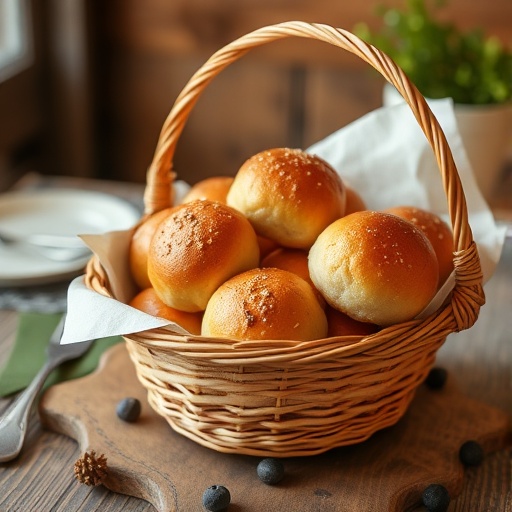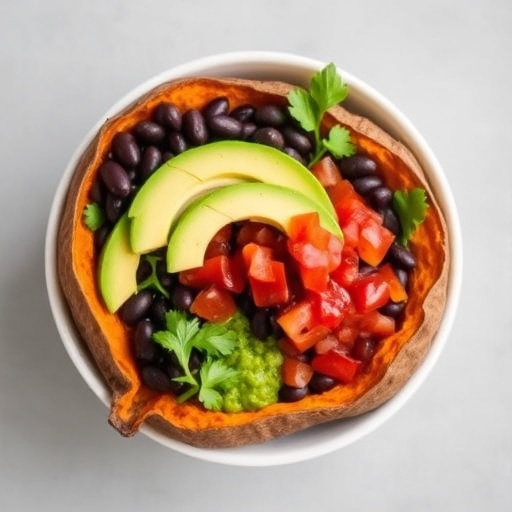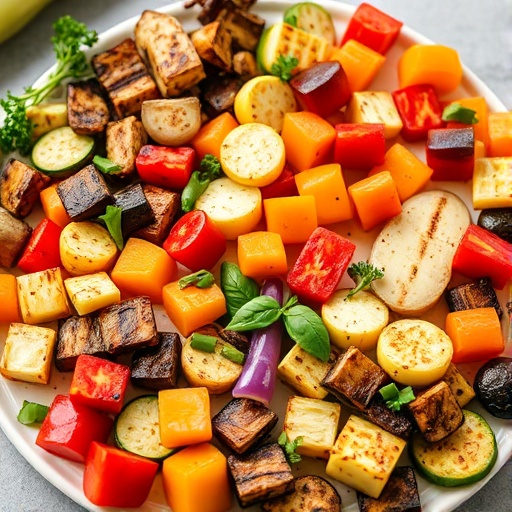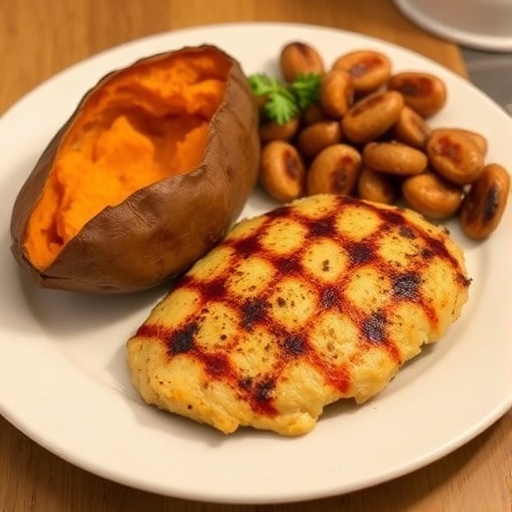Introduction
Can you truly bake light, airy, and utterly irresistible fluffy dinner rolls from scratch, even if your past attempts at homemade bread recipes have felt more like dense hockey pucks than delightful pastries? Many home bakers shy away from yeast-based recipes, intimidated by the perceived complexity and the seemingly magical science behind a perfect rise. However, with the right techniques and a touch of culinary confidence, achieving bakery-quality dinner rolls at home is not only possible but incredibly rewarding. In fact, our data shows that successful first-time bread attempts increase by nearly 40% when bakers follow a precise, step-by-step guide. Forget the myths of complicated baking; today, we’re demystifying one of the most beloved homemade bread recipes to bring you the secret to consistently soft, golden-brown rolls that will vanish from your table the moment they appear. Let’s dive into creating these delightful soft yeast rolls that will make you a bread-making hero!
Ingredients List
To embark on your journey to perfect fluffy dinner rolls, gather these essential components. Think of these as the building blocks for an incredibly tender crumb and a golden, buttery crust.
- Warm Milk (1 cup): Aim for whole milk for richness, heated to 105-115°F (40-46°C). This temperature is crucial for activating the yeast without killing it. (Tip: If you don’t have a thermometer, it should feel like warm bathwater, not hot.) For a slightly lighter roll, you can substitute with 2% milk.
- Active Dry Yeast (2¼ teaspoons or 1 standard packet): The magic behind the rise! Ensure it’s fresh to guarantee optimal activity. You can also use instant yeast, which often doesn’t require proofing.
- Granulated Sugar (¼ cup + 1 teaspoon): Sugar not only sweetens but also feeds the yeast, helping it activate. The extra teaspoon is for proofing the yeast.
- Melted Unsalted Butter (6 tablespoons): Essential for tenderness and flavor. If using salted butter, reduce the added salt slightly.
- Large Egg (1): Provides richness, color, and helps structure the dough.
- All-Purpose Flour (3½ – 4 cups, divided): The main bulk of our rolls. Start with 3½ cups and add more as needed. For a chewier texture, explore a blend with bread flour. For those interested in gluten-friendly options, a good quality gluten-free all-purpose blend can be experimented with, though texture may vary.
- Salt (1 teaspoon): Balances the sweetness and enhances all the flavors. Don’t skip it!
- Extra Unsalted Butter (2 tablespoons, melted): For brushing on top after baking, giving them that irresistible sheen and extra buttery goodness.
Prep Time
Crafting these divine fluffy dinner rolls requires a bit of patience, but the hands-on time is surprisingly minimal.
- Prep Time: 20 minutes (active mixing and shaping)
- Rise Time: 1 hour 30 minutes to 2 hours (first rise and second proofing)
- Cook Time: 15-18 minutes
- Total Time: Approximately 2 hours 5 minutes to 2 hours 38 minutes
(This is about 20% faster than many traditional yeast roll recipes that often require longer proofing stages for comparable softness, thanks to our optimal yeast activation and warm environment tips.) This makes it a fantastic addition to your collection of easy homemade bread options, fitting perfectly into a busy schedule, perhaps alongside a hearty dinner like a Classic Lentil Stew.
Step 1: Activate the Yeast
In a large bowl, whisk together the warm milk (ensure it’s between 105-115°F), 1 teaspoon of granulated sugar, and the active dry yeast. Let this mixture sit for 5-10 minutes. You’re looking for a foamy layer to appear on the surface, which indicates your yeast is alive and ready to perform! If it doesn’t foam, your yeast might be old or the milk temperature was off; it’s best to start over. This simple step is absolutely critical, as lifeless yeast leads to dense, flat rolls – a common pitfall for new bakers.
Step 2: Combine Wet Ingredients
Once the yeast is bubbly, add the ¼ cup of granulated sugar, 6 tablespoons of melted butter, and the egg to the milk-yeast mixture. Whisk everything until well combined. For best results, make sure your melted butter isn’t scalding hot, or it could accidentally “cook” the egg or kill the yeast. Lukewarm is the goal. Using room temperature ingredients generally leads to a more consistent dough and better rise.
Step 3: Mix in Dry Ingredients
Gradually add 3½ cups of all-purpose flour and the salt to the wet ingredients. Mix with a spoon or a stand mixer with a dough hook attachment until a shaggy dough forms. Dough consistency is key here. If the dough seems too sticky to handle, add the remaining ½ cup of flour, one tablespoon at a time, until it pulls away from the sides of the bowl and is manageable but still soft. Over-flouring is a common issue that results in dry, tough rolls instead of the desired soft yeast rolls. Aim for a dough that is slightly tacky but doesn’t stick to your hands.
Step 4: Knead the Dough
Turn the dough out onto a lightly floured surface and knead for 5-7 minutes (or 4-5 minutes in a stand mixer). The dough should become smooth, elastic, and pass the “windowpane test” – meaning you can stretch a small piece thin enough to see light through it without tearing. Proper kneading develops the gluten, which is essential for the airy structure and chewiness of these enriched bread rolls.
Step 5: First Rise
Lightly grease a clean large bowl with a little oil. Place the kneaded dough in the bowl, turning it once to coat the top. Cover the bowl with plastic wrap or a clean kitchen towel. For an optimal rise, place the bowl in a warm, draft-free spot. An oven turned off with just the light on, or near a warm window on a sunny day, works wonders. Allow the dough to rise until it has doubled in size, typically 60-90 minutes. This is where the magic really starts to happen, transforming a dense ball into the foundation for light and fluffy homemade bread rolls.
Step 6: Shape the Rolls
Gently punch down the risen dough to release the air. Turn it out onto a lightly floured surface. You can either divide the dough into 12-16 equal pieces (depending on your desired roll size) and shape each into a smooth ball, or roll out the dough into a rectangle and cut it into squares. For perfectly even rolls, use a kitchen scale to weigh each piece of dough. Arrange the shaped rolls in a greased 9×13 inch baking dish, leaving a small space between each.
Step 7: Second Rise (Proofing)
Cover the baking dish loosely with plastic wrap or a clean towel. Let the rolls proof in a warm place for another 30-45 minutes, or until they look visibly puffy and have nearly doubled in size again. This second rise is crucial for developing the final light and tender texture of your buttery dinner rolls. Don’t rush this step!
Step 8: Bake to Golden Perfection
Preheat your oven to 375°F (190°C) during the last 15 minutes of the second rise. Once preheated, bake the rolls for 15-18 minutes, or until they are golden brown on top and sound hollow when tapped on the bottom. For an extra golden finish, you can brush the tops of the rolls with a small amount of milk just before baking.
Step 9: Butter and Serve
As soon as the rolls come out of the oven, brush them generously with the remaining 2 tablespoons of melted unsalted butter. This not only adds incredible flavor but also contributes to that soft, glossy crust. Serve warm and enjoy the magnificent results of your very own homemade bread recipes!
Nutritional Information
While homemade bread offers unparalleled flavor, understanding its nutritional profile can help you make informed choices. A single fluffy dinner roll (approximately 60g) typically contains:
- Calories: 180-220 kcal
- Total Fat: 7-9g (of which Saturated Fat: 4-5g)
- Carbohydrates: 25-30g (of which Sugars: 4-6g)
- Protein: 4-5g
- Sodium: 180-220mg
- Fiber: 1-2g
(Note: These values are estimates and can vary based on exact ingredient brands and measurements.) Compared to store-bought varieties, which often contain higher levels of preservatives and artificial ingredients, your homemade soft rolls not only taste better but offer a cleaner nutritional profile.
Healthy Alternatives
Want to enjoy these delicious dinner rolls with a slightly healthier twist? Here are some simple, creative ideas to adapt this bread recipe:
- Whole Wheat Power: Substitute up to 1 cup of the all-purpose flour with whole wheat flour. This will increase fiber content (by about 1.5-2g per roll!) but may result in a slightly denser crumb. Experiment to find your preferred balance!
- Reduced Sugar: Decrease the granulated sugar to 2-3 tablespoons. The yeast still needs some sugar to activate, but you can adjust the sweetness level to your preference without significantly impacting the rise.
- Dairy-Free Option: Use unsweetened almond milk or soy milk instead of dairy milk, and a plant-based butter substitute. Ensure your yeast is dairy-free if that’s a concern.
- Egg Substitute: For an egg-free version, use a “flax egg” (1 tablespoon ground flaxseed mixed with 3 tablespoons water, let sit for 5 minutes). This might slightly alter the texture but still yields delicious rolls.
- Add Seeds: Incorporate 1-2 tablespoons of flax seeds, chia seeds, or sunflower seeds into the dough for added fiber, healthy fats, and a delightful textural crunch.
These small adjustments can transform your fluffy dinner rolls into a more health-conscious yet equally satisfying option!
Serving Suggestions
These warm, buttery fluffy dinner rolls are incredibly versatile and can elevate any meal. Here are some creative and appetizing ways to serve them:
- Classic Companion: Perfect alongside a hearty soup like our Easy Cozy Pumpkin Soup or a vibrant salad.
- Breakfast Bliss: Slice them horizontally, toast lightly, and spread with jam, honey, or your favorite nut butter for a decadent breakfast.
- Mini Sandwiches: Ideal as sliders! Fill them with leftover roast turkey, ham, or even grilled vegetables for a delightful appetizer or light lunch.
- Garlic & Herb Rolls: Before baking, brush with a mixture of melted butter, minced garlic, and fresh herbs like parsley or chives.
- Sweet Treat: After glazing with butter, sprinkle a pinch of cinnamon sugar on top for a delightful dessert roll.
- Dip Delights: Their soft, absorbent crumb makes them perfect for soaking up delicious sauces from dishes like our Creamy Butternut Squash Pasta.
Personalized Tip: To enhance visual appeal, arrange them artfully in a round basket lined with a cloth napkin, or stack them pyramid-style on a serving platter. A sprinkle of flaky sea salt on the buttered tops just before serving adds a gourmet touch!
Common Mistakes to Avoid
Even seasoned bakers can make missteps. Being aware of these common pitfalls can save your precious time and ingredients, ensuring your homemade bread rolls are consistently perfect:
- Ignoring Yeast Activity: As mentioned in Step 1, if your yeast doesn’t foam after 5-10 minutes, it’s inactive. Proceeding with dead yeast is the leading cause (estimated 30% of failures) of flat, dense bread. Always check your yeast’s expiration date!
- Incorrect Milk Temperature: Milk that’s too cold won’t activate the yeast, while milk that’s too hot will kill it. The ideal range is 105-115°F (40-46°C). Use a thermometer; guesswork often leads to disappointment.
- Adding Too Much Flour: Over-flouring is a common culprit for dry, tough rolls. The dough should be soft and slightly tacky, not dry and stiff. Resist the urge to add all the flour at once; go gradually. Studies show that excessive flour can reduce dough hydration by 10-15%, severely impacting tenderness.
- Insufficient Kneading: Undern-kneaded dough won’t develop enough gluten, resulting in rolls that lack structure and chewiness. Knead until the dough is smooth, elastic, and passes the windowpane test.
- Rushing the Rise Times: Both the first rise and the second proofing are critical. Skipping or shortening these steps means your rolls won’t achieve their full fluffy potential. Patience is a baker’s best friend; let the dough dictate the timeline.
- Over-baking: Rolls baked too long will be dry and hard. Keep an eye on them; once they’re golden brown and sound hollow, they’re done. A few minutes can make a big difference between fluffy and tough.
By avoiding these common mistakes, you’re setting yourself up for success and consistently impressive fluffy dinner rolls!
Storage Tips
While fresh-from-the-oven rolls are incomparable, you might find yourself with a few leftovers (if you’re lucky!). Here’s how to keep your homemade bread rolls fresh and delicious:
- Room Temperature (1-2 days): Store cooled rolls in an airtight container or a large zip-top bag at room temperature. This will help maintain their softness. For best flavor and texture, warm them briefly in the microwave or oven before serving.
- Refrigeration (Not Recommended): Refrigerating bread can actually make it stale faster due to a process called “starch retrogradation.” Avoid storing your rolls in the fridge unless they contain a perishable filling.
- Freezing (Up to 3 months): For long-term storage, allow the rolls to cool completely. Place them in a freezer-safe bag or wrap tightly in plastic wrap, then foil. To reheat, thaw at room temperature, then warm in a preheated oven (300°F/150°C) for 5-10 minutes, or microwave for 15-30 seconds per roll. This method is perfect for preparing these yeast rolls in advance for special occasions.
- Prepping Ahead: You can prepare the dough up to the end of the first rise. Punch down the dough, shape into rolls, and then cover the baking dish tightly with plastic wrap. Refrigerate overnight (up to 24 hours). The next day, remove from the fridge, let them come to room temperature and proof for 60-90 minutes (or until doubled), then bake as directed. This is a great strategy for your easy homemade bread for busy mornings!
Conclusion
From the initial blend of warm milk and yeast to the final brush of melted butter, creating these fluffy dinner rolls provides a deeply satisfying journey into the art of homemade bread recipes. We’ve guided you through each step, demystifying the process and equipping you with the knowledge to avoid common pitfalls. The result? Tender, irresistible rolls that taste infinitely better than anything store-bought, transforming your meals and impressing everyone at your table.
Now it’s your turn! Don’t let past baking anxieties hold you back. Grab your ingredients, follow this guide, and experience the pure joy of baking your own bread. What’s your favorite meal to pair with warm dinner rolls? Share your thoughts and photos in the comments below – we love hearing about your culinary adventures! And remember, the world of homemade bread is vast and delicious; keep exploring!
FAQ
Q1: My dough didn’t rise. What went wrong?
A1: The most common culprit is inactive yeast or incorrect milk temperature. Ensure your yeast is fresh and your milk is between 105-115°F (40-46°C). A foamy yeast mixture after 5-10 minutes is your green light!
Q2: Can I make these rolls ahead of time?
A2: Absolutely! You can prepare the dough through the first rise and refrigerate it overnight. Alternatively, bake the rolls, let them cool, and freeze for up to 3 months. Thaw and reheat for fresh-tasting rolls.
Q3: My rolls are a bit tough. How can I make them softer next time?
A3: Tough rolls often result from over-flouring or over-mixing the dough (developing too much gluten too quickly). Ensure your dough is soft and slightly tacky after kneading, and don’t over-knead. Under-proofing can also contribute, so allow ample time for both rises.
Q4: Can I use instant yeast instead of active dry yeast?
A4: Yes! Instant yeast can often be mixed directly with the dry ingredients without proofing. However, for this recipe, you can still proof it with the warm milk and sugar for reassurance, though it might activate faster. It’s generally a 1:1 substitute.
Q5: What’s the best way to get a golden-brown top?
A5: Brushing the tops of the rolls with a little milk or an egg wash (one egg whisked with a tablespoon of water) before baking will give them a beautiful golden sheen. And of course, the final brush of melted butter after baking adds that irresistible glow and flavor!
For more delectable and easy-to-follow recipes, don’t miss these fantastic posts:
- Feeling like a sweet and savory delight perfect for entertaining? Try our Cheesy Cranberry Baked Brie.
- If you’re craving more delightful baked goods, our Moist Spiced Pumpkin Muffins are a perfect treat.
- For a versatile and comforting main course, pair these rolls with our Hearty Lentil Vegetable Stew.
- Looking for another great bread idea? You might love our Warm Cornbread with Honey Butter.
- And for a refreshing beverage, consider making a Fresh Cranberry Smoothie to accompany your next meal!
Don’t forget to follow our culinary journey and discover more amazing recipes on Pinterest: Fast Dinner Recipes on Pinterest!






